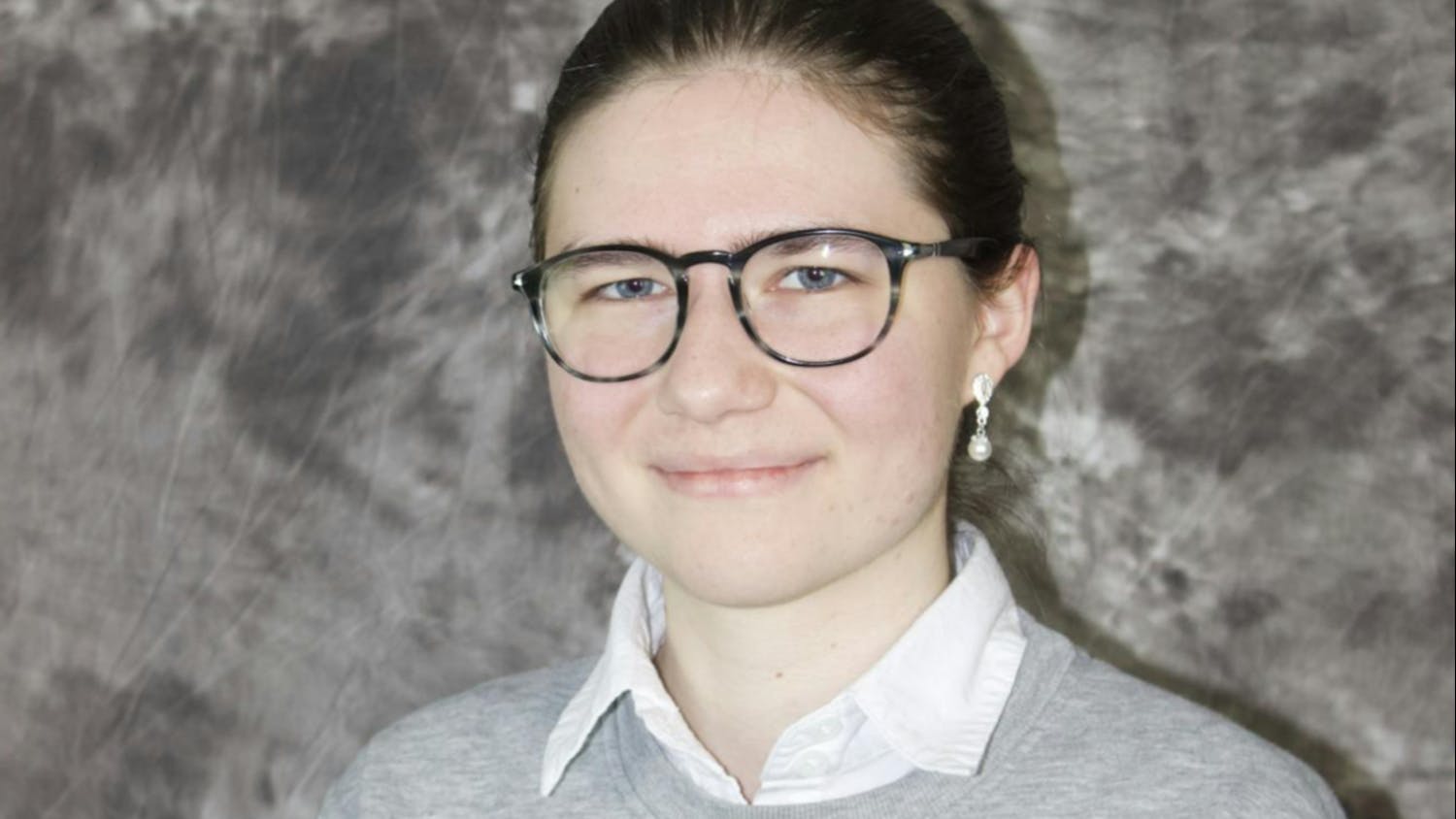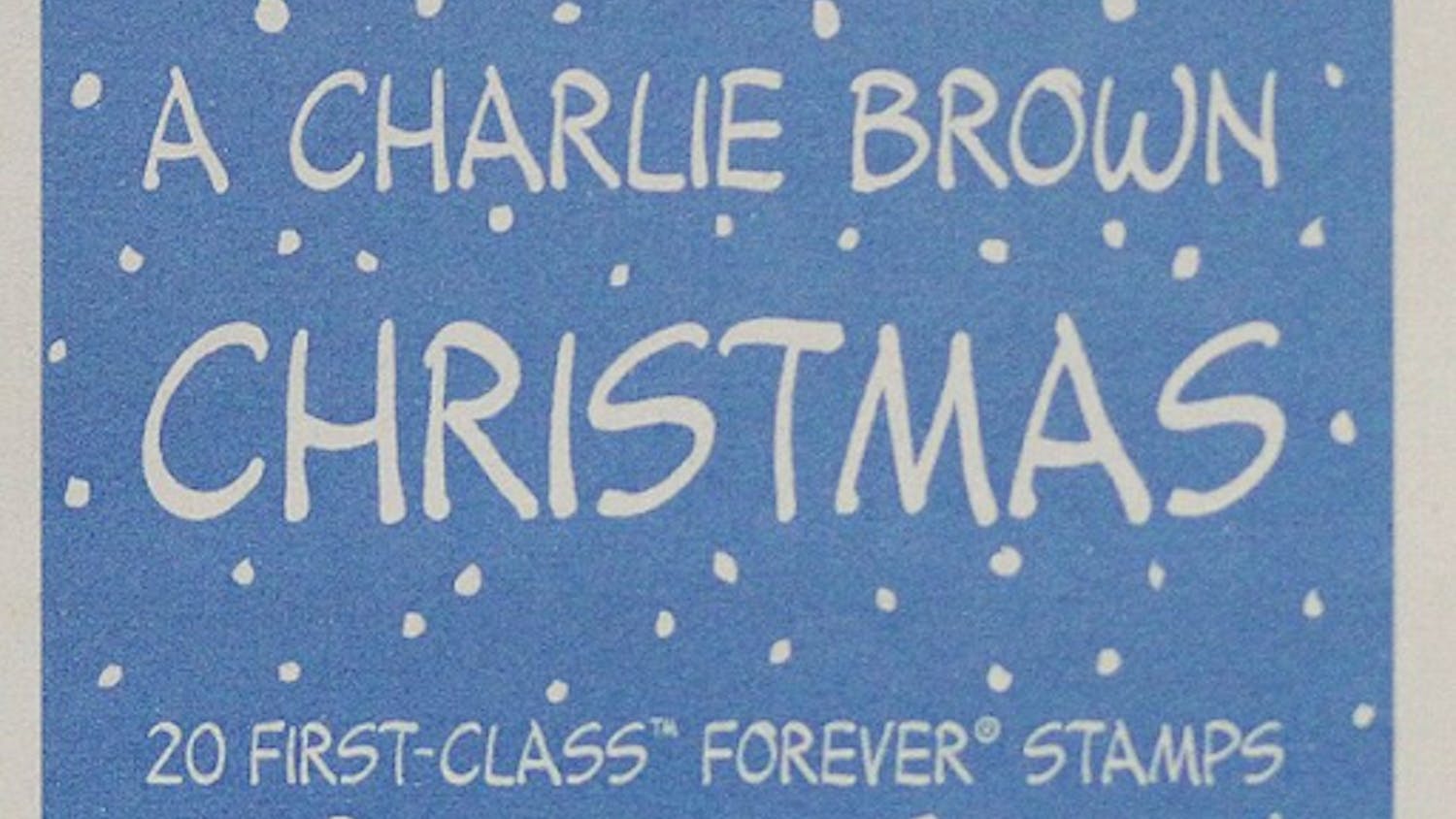The controversial “White Only” and “Black Only” art project displayed on campus last week caused an emotional and at times intense open forum discussion for students, faculty and UB officials Wednesday night.
The Student Association and the Black Student Union (BSU) organized the forum. The forum aimed to give students an opportunity to voice opinions on the “White Only” and “Black Only” signs UB graduate fine arts student Ashley Powell posted around campus last week as part of a class art project.
More than 300 people attended, including a panel of UB faculty and officials. The forum’s main focus was allowing students to speak. Students applauded and snapped when one of them made a point they all agreed with and one student began to cry while speaking to the audience.
Before the forum began, BSU made it clear that the discussion was not intended to focus on the signs or Powell, but about those affected and to make sure it never happened again. The forum used the signs as the first of many discussions about potential change on campus.
Students, faculty and officials discussed a wide range of topics, but the main points were:
- The historical context of “White Only” and “Black Only”
- Students’ personal experiences with racism on campus
- Issues with how UB and University Police handled the situation
- What UB can do to have more racial and social inclusion on campus
- The legality of Powell’s project
- President Satish Tripathi’s absence from the forum and student disappointment that he has yet to release a statement about the controversy
Kenny Berrouet, a junior business major, said some students of color currently don’t want to apply to UB because of the situation. He said the only way to change that is to make sure the university does not let the problem slowly dissolve without a solution.
“We are a campus under fire and a business,” he said. “We don’t want the reputation of the university on the line.”
Student reactions to the signs
Discomfort, anger, fear and disgust were just a few of the emotions students mentioned when asked how they felt when they first saw the signs.
Jason Young, a history professor, gave the historical context of the signs by displaying images of “White” and “Colored” water fountains from the mid-20th century. He also said why he believes students had the reaction they did toward them.
“The angst that emerged from these signs came from students wondering where they are allowed versus where they are welcomed,” Young said.
When Deidree Golbourne, BSU vice president and junior African American studies major, asked who felt unwelcomed when they saw the signs, almost every hand in the audience went up.
One student said because he grew up in a mainly white community in Westchester, New York, he has trained himself to tolerate favor, biases and prejudice.
Another student said when he first saw the signs, he was defensive and had to control himself because he knew that if he proceeded in a violent manner, it could have resulted in a bigger problem.
Susan Green, clinical associate professor and co-director of the Institute on Trauma and Trauma-Informed Care, said being defensive is an appropriate reaction to this traumatic experience.
Green said one theory for this trauma is called Post Traumatic Slave Syndrome, which is based on history and experience of past generations. African Americans today may not have an exact memory of slavery, but they have a feel for it in their memory that is coded in their DNA, Green said.
Students’ experiences with racism on campus
Golbourne, who served as forum moderator, also asked the audience if anyone had ever experienced other forms of overt racism.
Isaiah Davis, a senior philosophy and English major, talked about his experience as a black resident adviser (RA) on campus and his affiliation in an Afro-Latino fraternity.
“One time I was wearing a hoodie and sweats and someone behind me asked, ‘Isaiah, why are you dressed like a hoodlum,’” he said. “There was a white RA standing right next to me in the same exact outfit.”
Rashaad Holley, a senior business major, said he didn’t feel very welcomed once he got to campus.
During his first week at UB, Holley said he got off the Stampede bus on South Campus and asked a UPD police officer where the library was. He said the officer responded with, “Are you even a student?”
“Some people might not think it was that big of a deal, but it was my first interaction with an officer on campus and I felt unwelcomed,” he said. “All I wanted was to be looked at as a student when I came here and nothing else.”
BSU President Micah Oliver, a senior social sciences major, said he had a professor rap lyrics from a 1979 song “Rock n Roll N*gger.”
“He tried to make it OK by putting it in some academic context but it just shows how desensitized some professors are,” Oliver said.
Issues with University Police’s response
One of the biggest issues students said they had was UPD’s response.
Christina Dunn, a junior communication and sociology major, said her mother called UPD to get more information on the signs since Dunn was off campus at the time. She said UPD told her mother, “there are black [only] signs too.”
“That shouldn’t have been the response,” Dunn said. “Why assume the caller was of any race?”
Davis said a UPD officer told students that calls about the signs kept officers from handling a situation on South Campus.
“He blamed the black community for not addressing an assault on South Campus,” Davis said. “It just shows those people are incompetent with their jobs.”
Barbara Ricotta, associate vice president for Student Affairs, told students every call that comes into the dispatch unit is recorded and UB is currently listening back to every call and examining how dispatchers handled them. She also said every complaint against an officer is taken seriously and she advised students file a complaint if they are concerned with how a situation was handled.
Issues with UB’s response
At least three students brought up Tripathi’s absence and his lack of a statement on the issue Wednesday night. One student even said Tripathi was failing students.
They all thanked the panelists for being there, but commented that the university president should be there.
“I love that you’re all here, but you’re not him,” one female student said to the panel.
Tripathi sent The Spectrum a statement Thursday that can be read here.
Students also took issue that the university did not send out an alert about the situation, as the students felt their safety was in danger when they first saw the signs. UB released a statement about the signs later in the evening once it had been revealed the signs were a part of an art project.
Ricotta admitted that UB should have sent out message to alert students more quickly and the situation could have been handled better.
One student was angered by the student representation at the forum, as she commented that the entire university was invited but the vast majority of student attendees were black.
Legality of art project
Students said they will not be at ease until UB’s administration makes a decision on the art project.
Jim Jarvis, associate counsel for general accounts, said there is tension between the right of freedom of expression and discrimination. The art project was not pervasive or severe enough to be unlawful discrimination, he said.
He did admit, however, that rules were broken.
Jarvis said UB requires projects and items placed in common areas are submitted for approval of health, safety and welfare before installment. Powell’s signs were not.
If the project had been approved, the display would have been labeled as such so people had a clear understanding of what it was.
When Golbourne asked the audience who considered the signs art, no one raised their hand.
Franchesca Lara, a senior health and human services major, said she didn’t look at it as art because of Powell’s intent.
“All she did was print out a sign and post it to get a reaction out of people – that was a social experiment,” Lara said.
One student said that rules are meaningless without enforcement. Since the university has agreed that the student broke the rules, there must be a consequence. The audience applauded in agreement.
How to move forward
Although UB is one of the more diverse universities in the nation, many students said they feel a division among ethnic groups.
“It’s like oil and water – we’re a diverse campus but people don’t mix,” said Rogelio Garnes, a sophomore business major. “You can put in as many students as you want, but not everyone understands or cares to understand where each other come from.”
UB has taken some steps to change this.
Starting next fall, all incoming UB students are required to take a diversity and learning course for the first time ever, said Teresa Miller, law school professor and vice provost for Equity and Inclusion. It will not only discuss racial oppression, but how gender, sexuality and religion overlap each other as well. The room applauded the announcement.
So far, 44 courses have been approved and more than 200 seats have been filled.
But students made it clear that this isn’t enough. Students suggested faculty go through diversity training as well.
One student commented on the lack of minority professors at UB. According to College Factual, 83 percent of UB faculty is white and 5.9 percent is black.
Another student noted the absence of many black UPD officers.
Ricotta said she and other faculty want to create an advisory colored committee for UPD starting in October. She wants students to talk to officers about their past experiences and how officers can do a better job at making students feel safe on campus.
Berrouet has taken it upon himself and his peers to reinstate a NAACP chapter at UB. He said BSU can’t be the only ones to evoke necessary changes.
“If I were student of color applying for college, I wouldn’t come here,” Berrouet said. “I’ll go to [SUNY] Buff[alo] State or another SUNY school.”
Oliver and SA President Minahil Khan both gave closing statements that the conversation about change must continue and cannot end with Wednesday’s forum.
Editor's note: This article has been updated to include a link to President Satish Tripathi's statement.
Gabriela Julia is the senior news editor and can be reached at gabriela.julia@ubspectrum.com.




